This Week in NYC: Meditations on Horror, Celestial Interpretations, and a Dance Festival in Battery Park
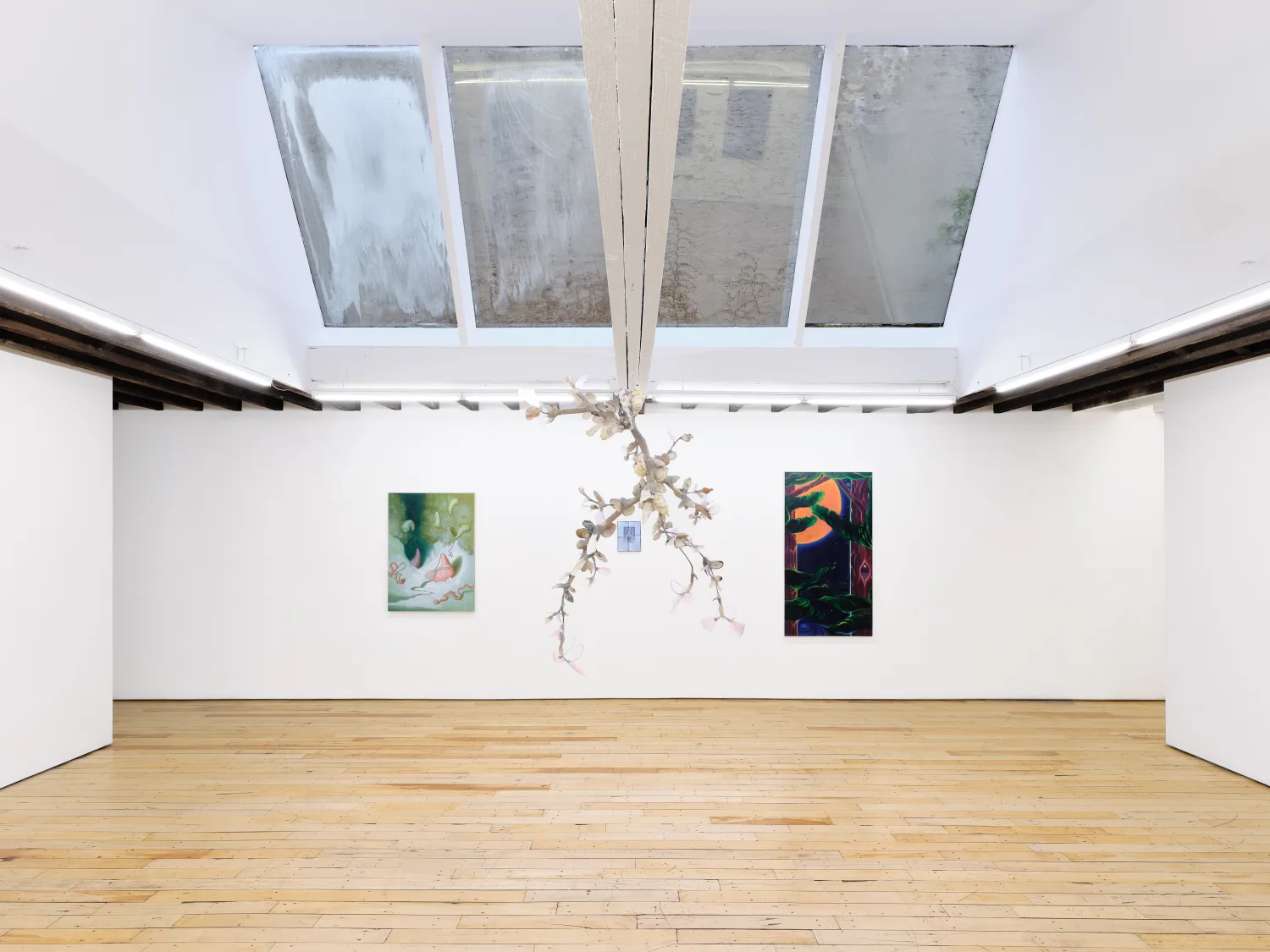
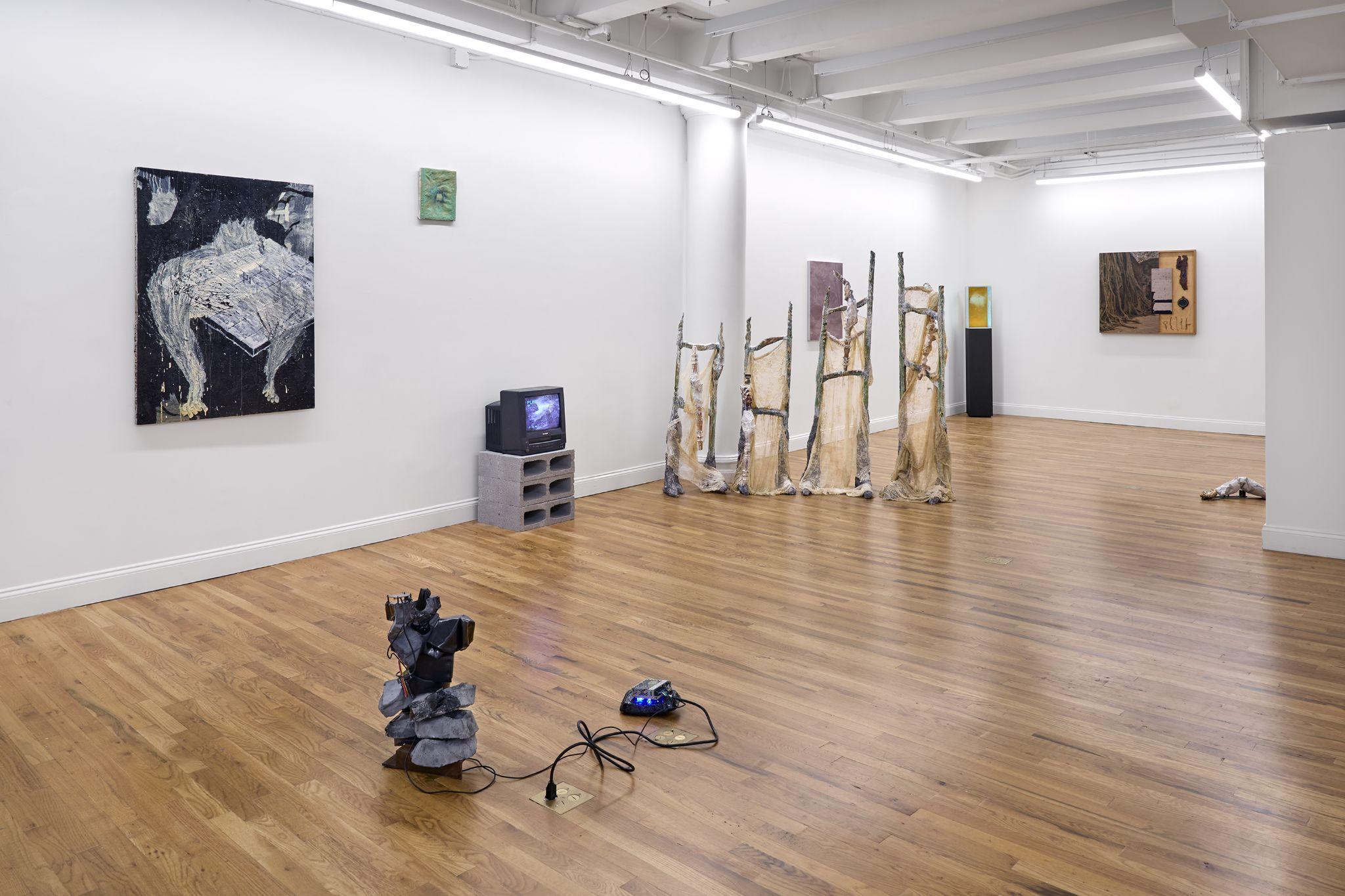
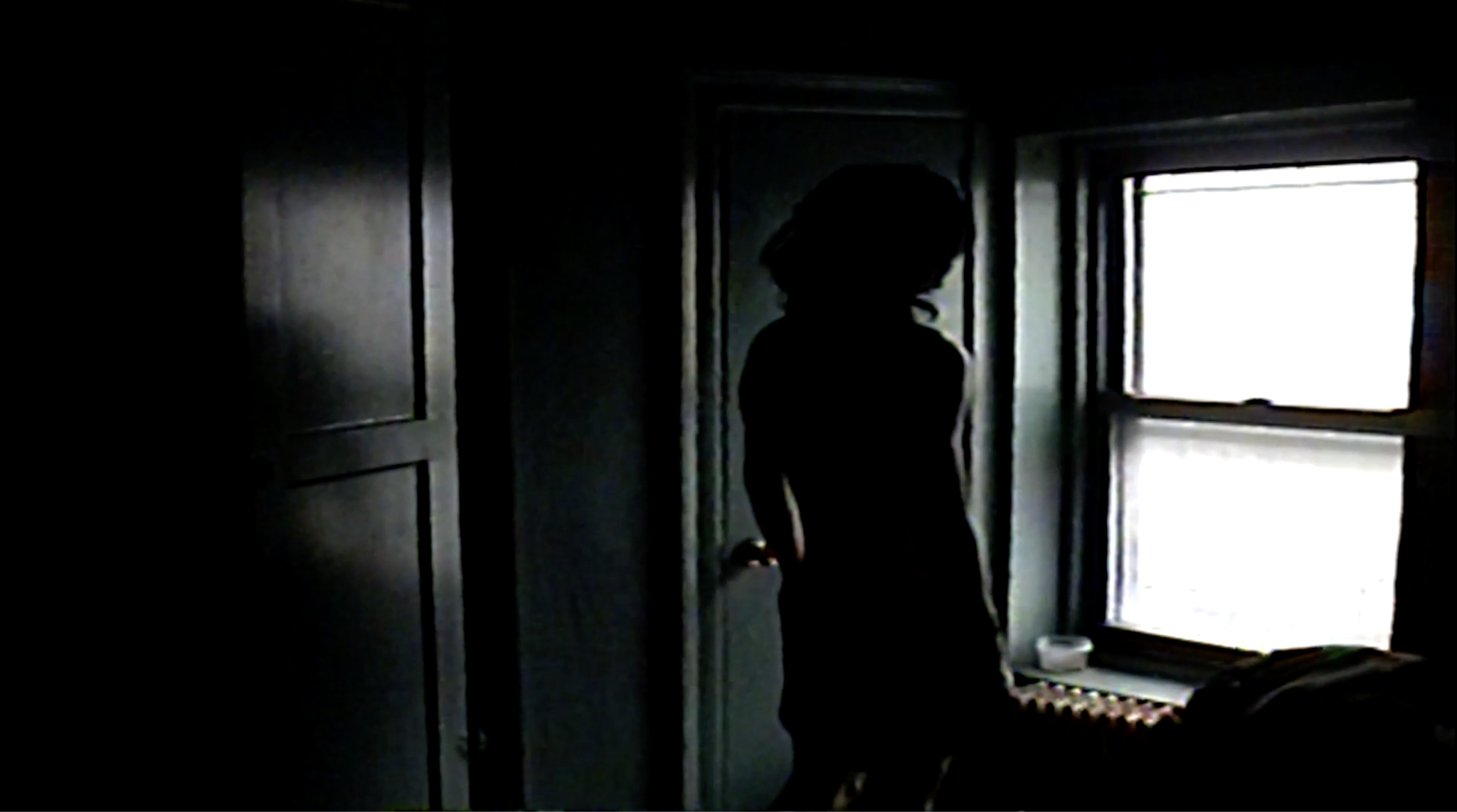
No Footsteps Return at RAINRAIN
Closing August 16
At RAINRAIN, horror is transformed through the lens of film, sickness, and domesticity into meditations on autonomy, reliance, and coming-to-terms. Echo Youyi Yan’s screen sculpture made of of chair backs, draped with lace table cloths is something from a haunted house; a critique of women’s role in the domestic sphere—dated expectations that might lead to abandoning autonomous parts of your identity as a woman takes on the role of a wife. Eerie.
Finnish artist Tiina Pyykkinen has on a piece of stainless steel painted layer upon layer of oil in Sweet Dreams (2023); sleek, but overladen. Layers of anxiety that appears as one of the surface, perhaps. Connor Sen Warnick, in his video work “Fainting,” recreates a feeling of losing control through a series of disorienting images. It references Ringu (1998), the Japanese horror film, where a reporter realizes that watching a woman’s spirit captured within a videotape leads to death, so she attempts to solve the curse and cheat death. While the sea witch Ursula in Disney’s The Little Mermaid (1989) attempts to trick her way to the sea throne, but ultimately dies, becoming sea foam. In a glass aquarium, Phoebus Osborne recreates the aftermath of Ursula’s death, we see the remnants of a material body after a chemical process with rust and copper sulfate staining the walls of the aquarium. Moving away from the “jumpscare aspects” of the film, for Warnick, fainting is a death we wake from, or like in Ringu, climb out from ith cunning, for Osborne, death is a transformation of our bodies.
The scholar Laura Forlano writes on disability studies and crip-tech, Itziar Barrio cites her insulin pump alert data as one of its moving parts in their kinetic tech sculpture was on low (2023). Installed on the floor, moving as if it were breathing, t’s a friendly piece—perhaps it isn’t so bad living with an insulin pump, I think. In Gaza, doctors are taking medical implants from their dead for reuse, the BBC Global News Podcast reported the other day, due to shortages. When I heard that newsstory and see Barrio’s piece, I sadly thought that there is terror in care, but it is better than no care. “Horror can be slow and existential,” writes the curator Chiarina Chen in her press release.
Chen has investigated complex topics that at first seem difficult to approach, but actually open up a world of possibilities in three recent exhibitions: the edges of language, rejection, and now horror. In from the unsettled edge at The Blanc Cheeny Celebrado-Royer’s site-specific wall work centred language, situating it as something that can be redrawn, like a map—a one-person piece, it serves as a prolog, looser, but also a little less clear, in its thematics. At Accent Sisters Reject Me Harder, invited artists (and me, I was also in it!) to present work on rejection, which produced feelings of empowerment and ownership; it gave us an ability to reject the rejectors. An open-mic night invited visitors into the fold of coming to terms by openly expressing rage and sadness, allowing the curator to explore community practices of collectivity and reckoning. No Footsteps Return is the most complex in this trio; Chen has chosen artists who harness horror and fear to delve into both exterior and interior lives. The two group shows push beyond the boundaries of what we might expect from rejection and horror, begging visitors to let each artwork enter and alter their psyches.

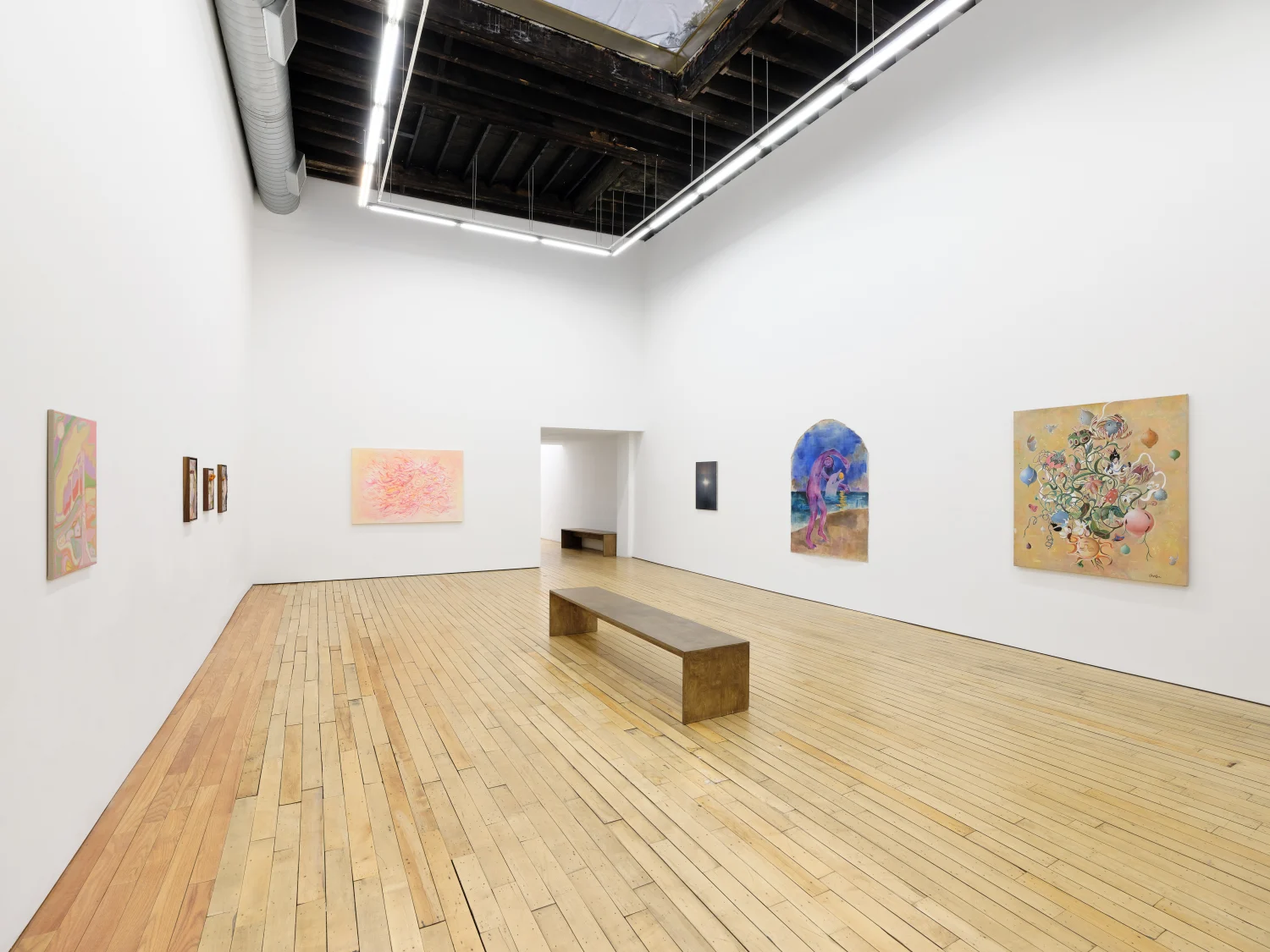
Solar Music/Lunar Revel at Uffner & Liu
Closing August 15
Last summer, I reviewed Arcus at Rachel Uffner curated by Lucy Liu. Now the gallery has become Uffner & Liu, as Liu has joined the gallery as partner, and although she is not listed as curator, their summer group show Solar Music/Lunar Revel has Liu’s distinct curatorial style all over: figurative works exploring spirituality and nature, embedded within an overall frame of material softness. Understated, the bottom floor, representing the sun, and the top, the moon, present many beautiful, thoughtful moments. Anna Danyang Song’s ceramic diary sculptures are installed on a shelf and showcase her mastery of the craft, as do two glazed stoneware pieces Spring (2025) and Strolling (2025). Also on the second floor, Shuyi Cao’s hangs from the ceiling Xenophora IV (2025) combines organic and man-made materials—sea shells, fossils, but also plastics—reflecting both our earth and the sky body where space debris and stardust intermingle. Downstairs, upon entry, Moon Bud and Star Reacher are installed on plinths.
The show does not lean into predictions or astrology. There is enough of that in social contexts and perhaps Vittoria Benzine’s more humorous take on the future in her new Elephant column, where she will pull and read tarot cards for the art world, will help bring less weight to that frenzy. I like Katie Paterson’s ideas more, sharply presented in cut sterling silver installed on the wall: “a solar flare containing all the light in the universe” and “the milky way compressed into a diamond.” Sleek and exaggerated, to the point. As are Olivia Jia’s ewer and Wanda Koop’s moon, clean cut and crisp.
Artists in the exhibition explore nature as it intermingles with the man-made, whether it be fantasy, the built environment, or spirituality. In the back room, Laurie Nye’s oil on linen Le Bosquet in Pink and Emerald (2024) depicts the French painter Pierre Bonnard’s house, behind trees. Like Bonnard, Nye’s works is comprised of stylized pieces of her surroundings. She will be having a solo show with the gallery this fall. Next to it, Yulia Iosilzon’s oil painting With My Eyes Closed (2024), with its spheres, is more overtly spiritual. Angela Wei Down the Rabbit Hole (2025) speaks to a more psychedelic or nonsensical relationship to nature and our natural surroundings. Heidi Norton places pressed flowers on painted grounds, creating a bridge between the subject and the artist’s interpretation of it. Forming a narrative curatorial arc, the arc in Jia Sung’s Super Moon July (2024) subtly nods to Liu’s last summer group show.
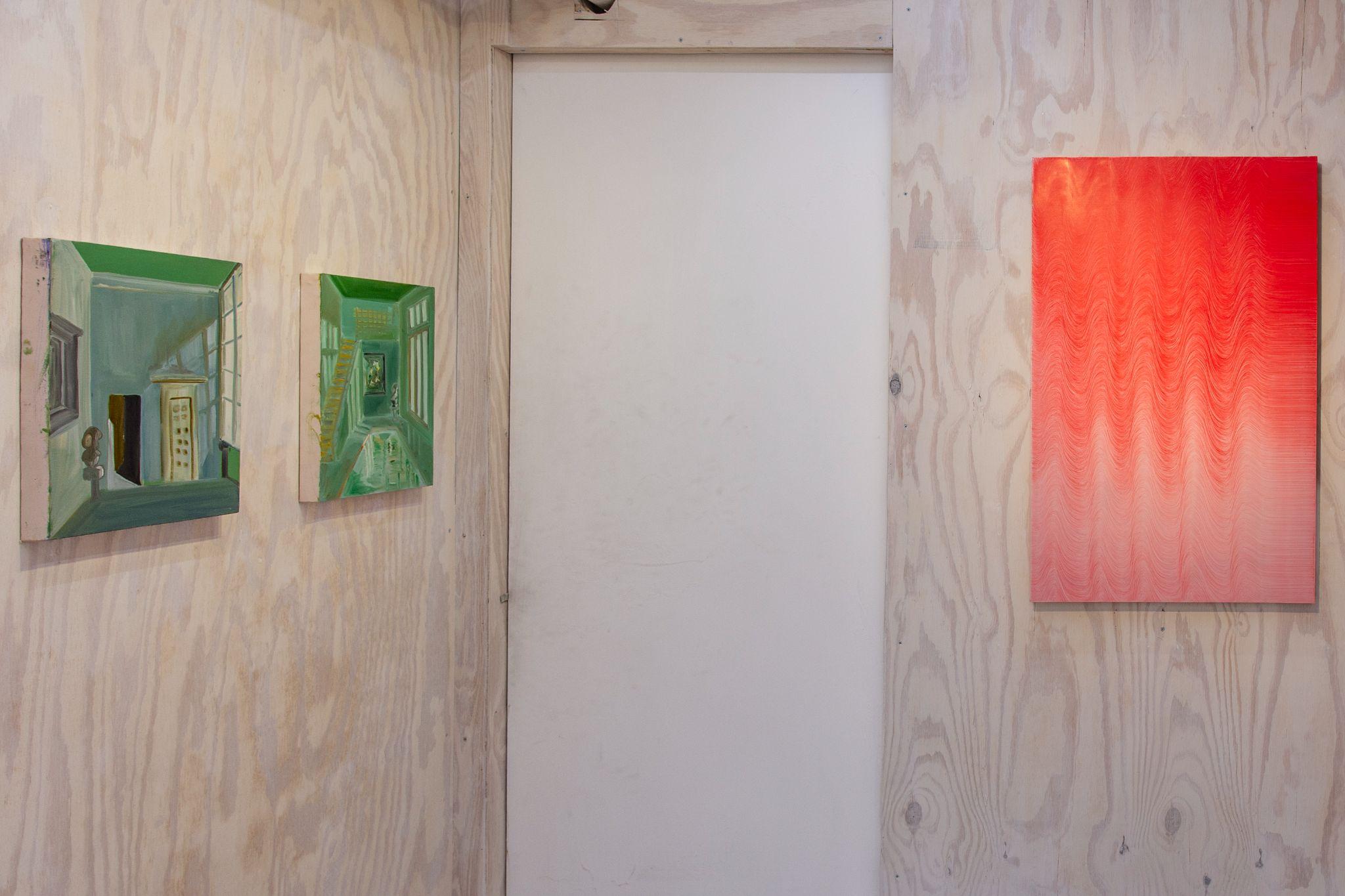
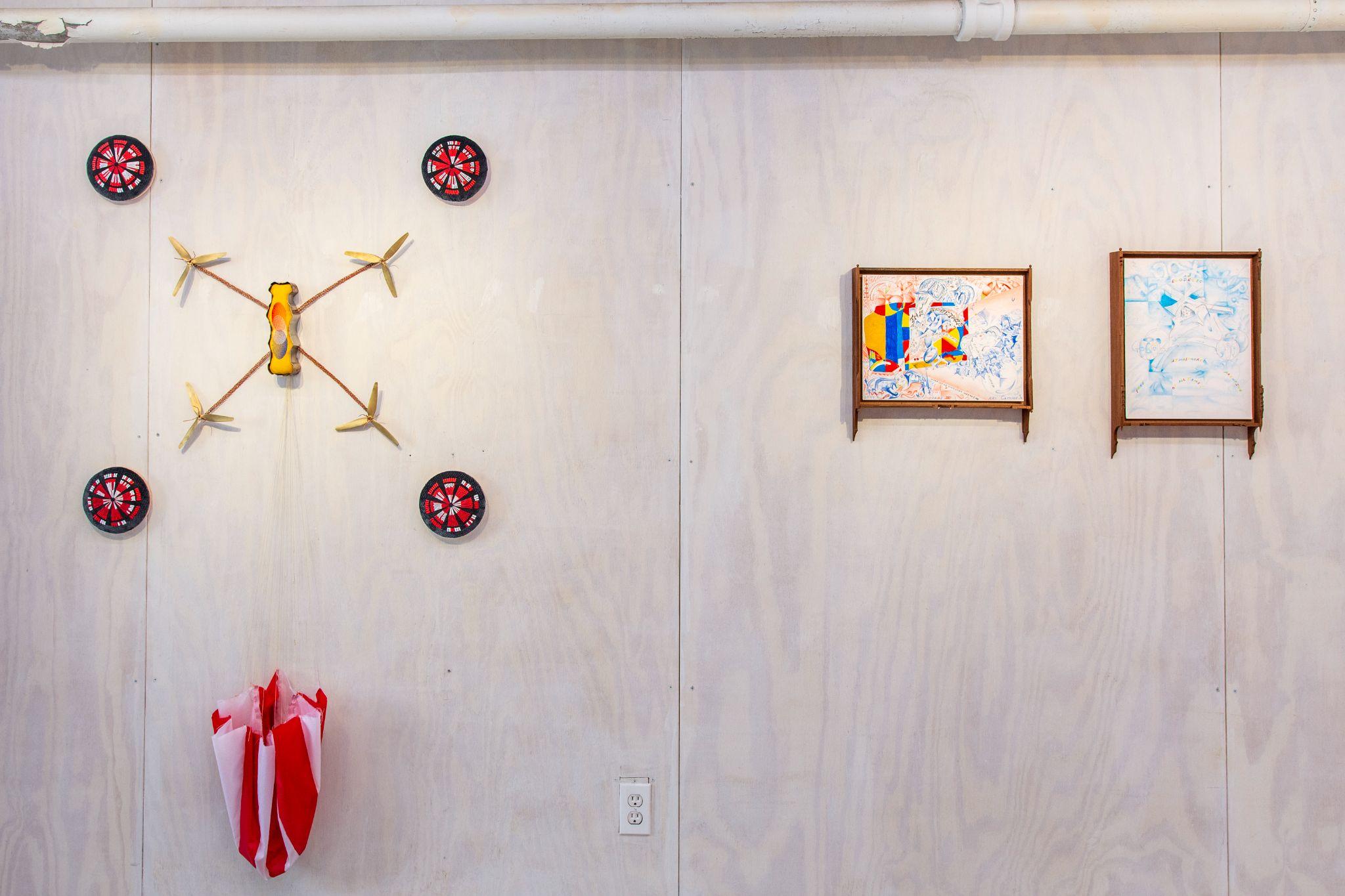
Relative to the Sun at HAIR+NAILS
Closing August 16
The expression, relative to the sun, refers to the use of the sun as a reference point, like speed from the position of the sun. This also means that from the sun, one looks back at earth, where we are, and that there is a lag in time before the sun’s light reaches us. Works in this exhibition seem to exist within that pocket of time, in between. In the back room, Mahsa R. Fard’s jewel-like oil paintings of dreamy interiors of pools, void of people, combine imagery she has seen and imagined: oases. I think of the interior spaces of riads in Morocco; these traditional houses or palaces seem inconspicuous from the outside, but reveal courtyards, fountains, pathways, lush interiors, and ornate architecture on the inside. They are installed with Rose McBurney and Allan Gardner’s evocative, blurred oil paintings. In the front room, things get weirder.
I first came across HAIR+NAILS at Felix in Los Angeles, their quirky booth at the Roosevelt Hotel drew my attention, as did the gallerists: Kristin Van Loon and Ryan Fontaine. Who were these, cooler than the minimal gallerist stereotype, Van Loon with her electric blue hair and Fontaine with his colorful ‘fit? Artists, of course, who first met at Minneapolis’ Walker Art Center—Van Loon, a dancer, and Fontaine, a musician and artist. Their program is ambitious, mixing artists from the Midwest with elsewhere presenting abstract and figurative colorful paintings, video, sculpture, and the occasional artist engaging in retrofuturist aesthetics, with many recognizable names. Their exhibition design with untreated wood walls nods to their background in DIY organizing, in a good way. Expanding from their Minneapolis HQ, they have been running a space on Henry Street in New York.
The dialogue between Don Christian Jones’ Don and Eiko Hose Dance I (2025) painting of a dancer and a hose and Aru Apaza Kunsa Apthaptawa (what do you bring?)(A score for violin and two rocks who know each other) (2025) mixed media abstract set-design both recall the open-ended possibilities of performing, while staging togetherness. Harry Gould Harvey IV, who is represented by PPOW, two highly detailed drawings depict dreamscapes. Telematic Vision has elements flowing out of a TV-set. While Brittni Ann Harvey’s wall installation combines elements into something poetic, shrine-like. Both boast intense imaginaries around Americana. Continuing with narratives, I can imagine Eric Timothy Carlson’s drawing of a comb titled Comb (after Claudette’s lost in fire) (2016) as a page in a children’s book, with a storyline of a woman dying in a fire, or surviving, but losing her comb. There is also a witch, an unmade bed, and a drawing of an A and an X called Omega (x), which surely has some deeper meaning that I cannot place. Either way, this imaginative show brings fantasy, memory, and fable into focus.
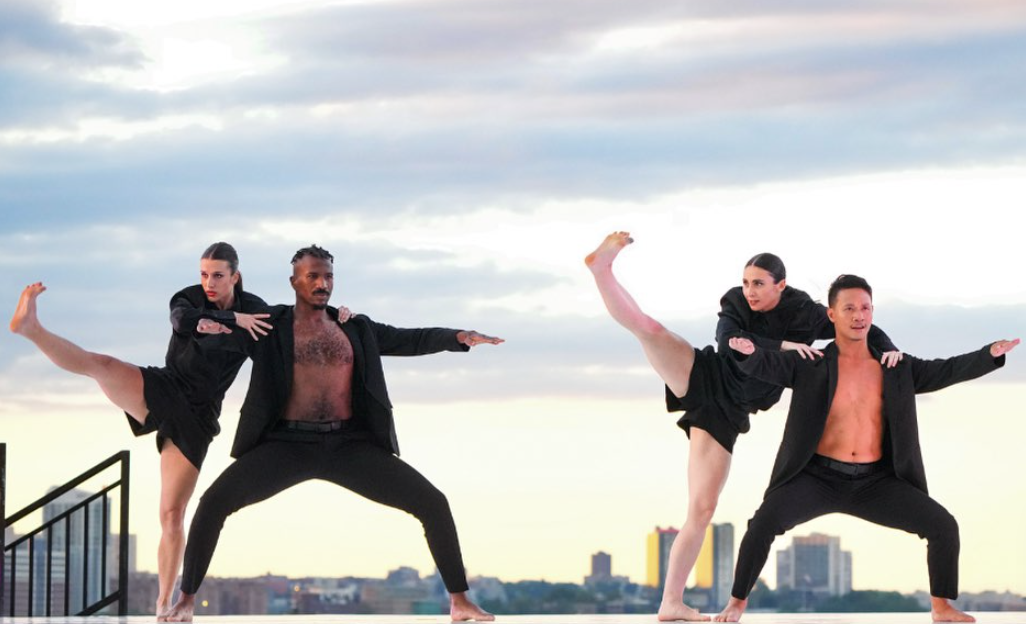
Battery Park Dance in Rockefeller Park
On August 14, 15, and 16.
Midway through, there is still a lot of dance to see as Battery Dance Festival welcomes viewers to see free performances against a shifting backdrop as the sun sets over Battery Park. Balkan Ballerina explore Eastern European and Balkan identity, Eden explores perception, beauty, and fear through hallucinogens, and In Search of You – মনের মানুষের খুজে (Moner Manusher Khuje), inspired by the songs of Lalon Fakir, speaks to the search for truth, love, and spirituality. Seeing dance companies from all over the world against the pink, orange, and purple skies are spectacular.
The remainder of the week’s performances take place at Rockefeller Park at 7PM today, tomorrow, and Saturday. No tickets required. There are also daily $1 workshops at 10-11:30AM. Highly recommended.
Performance schedule and workshop sign-up.
You Might Also Like
A Danish Curator Approaches Spirituality Through Industry at RAINRAIN
A Rare Collaboration, New York City Ballet’s Sara Mearns Dances Amidst Diana Orving’s Sweeping Arcs
What's Your Reaction?
Anna Mikaela Ekstrand is editor-in-chief and founder of Cultbytes. She mediates art through writing, curating, and lecturing. Her latest books are Assuming Asymmetries: Conversations on Curating Public Art Projects of the 1980s and 1990s and Curating Beyond the Mainstream. Send your inquiries, tips, and pitches to info@cultbytes.com.

